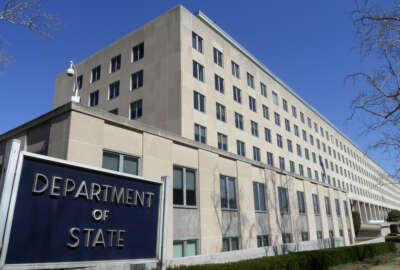Intel agencies just ‘scratching the surface’ on open source initiatives
Intelligence agencies are bringing more of a top-down focus to open-source intelligence (OSINT).
Intelligence agencies are coming together to coordinate on their “open source” collection and analysis efforts, with officials aiming to “professionalize” the discipline through training and tradecraft standards.
But advocates for OSINT say the intelligence community remains in the early stages of embracing it as a discipline that’s at least on par with classified sources and methods.
Brad Ahlskog, the chief of the Open-Source Intelligence Integration Center at the Defense Intelligence Agency, said leadership is trying to bring “enhanced governance” to OSINT efforts across the intelligence community. OSINT is generally defined as unclassified information, often publicly or commercially available, like social media feeds or cell phone data.
“How do we organize a very dispersed discipline with practitioners across many different components?” Ahlskog said during a panel discussion at last month’s Intelligence and National Security Summit. “In fact, all components of the IC are doing something with open source, whether they call it OSINT or not.”
One area of focus is “transparency,” Ahlksog said, with “who is doing what, who has what open source data, who’s acquiring it, how do we better share that?”
Another priority is integrating OSINT across agencies, including with the oversight of a new “OSINT-focused shop” at the Office of the Director of National Intelligence.
A third area of focus centers on “increasing efforts in enterprise solutions” for OSINT. Ahlskog called it a joint, multi-agency effort to create the “first organized tradecraft” around OSINT, similar to how there are established tradecraft and standards organized around other intelligence disciplines.
“There are pockets of expertise across the intelligence community and the industry and academia,” Ahlskog said. “The challenge is, how do we tie that together? And how do we create the standards in the tradecraft? So we have active efforts ongoing, [we] are now looking at that. But I would say it’s in the initial phases.”
Intelligence officials have been working for more than a year to standardize OSINT efforts. Former officials last year established a new “OSINT Foundation” to advocate for a greater focus on OSINT, including through professionalization and training.
One of the major challenges continues to be a bias for using intelligence gleaned from highly classified sources, rather than information that’s open available on the internet or elsewhere.
“Right now, our customer really believes that the only valuable content that the IC produces comes from super classified sources,” Ellen McCarthy, the chairwoman and chief executive officer at Truth in Media Cooperative, said during last month’s summit. “And that’s just frankly not the case.”
McCarthy, a former intel official who led the State Department’s Bureau of Intelligence and Research, said there’s little incentive for all-source analysts to use unclassified information in their intelligence products today.
But she suggested officials could start to increase the value of OSINT by, for instance, including a block of unclassified analysis in an upcoming national intelligence estimate, which are the intelligence community’s most authoritative written judgements on national security issues.
“This would give the customer an opportunity to see that what they’re reading at the unclassified level is as valuable as the super double, triple gamma [classified information],” McCarthy said. “And it would also get your analysts in the habit of starting to produce more at that level.”
Congress is also pushing the intelligence community to embrace more unclassified sources.
The fiscal 2024 Intelligence Authorization Act, passed by the House Permanent Select Committee on Intelligence earlier this year, requires the director of national intelligence to develop policy for the “the production and dissemination of unclassified intelligence products derived entirely from open-source intelligence, including from unclassified publicly available information, unclassified commercially available information, or any other type of unclassified information.”
But the culture of secrecy is difficult to change, especially since it’s reflected in the information systems intelligence agencies use. Sam Gordy, the president of open-source firm Janes US, pointed out that many analysts spend most of their time working on classified, “high side” communication networks that are “air gapped,” or disconnected from the open internet.
Meanwhile, the most up-to-date “open source” information is only available through “low side” unclassified systems.
“Do I want continuous access to that open source information, which means I have to operate on the low side? Or do I want to pull that in and port it over to the high side, which then means I’m air gapped?” Gordy said in an interview. “So now I’ve broken some of the advantages of that open source intelligence, because I’m no longer just connected out to the internet. I’ve got to wait until somebody does a bulk drop, download and move it over.”
Meanwhile, the vast amount of information available over the open internet means firms are turning to artificial intelligence and machine learning to help sift through the data.
Gordy said that Janes, which produces open-source military and national security analysis, uses AI as a “triage” at the beginning of its analytical processes to scan for the full range of data that’s available and then narrow that down to the “fraction of a percentage” that’s useful.
“The only way those analysts can get through everything they need to get through in any given day is by using AI and machine learning on the front end,” Gordy said.
Intelligence officials also remain concerned about disinformation, deep fakes and other potentially untrustworthy information that often spreads on the internet.
“There are some technical solutions that exist,” Ahkslog said. “How do we scale that up? How do we train a large portion of the intelligence of the workforce, particularly the all-source analysts, who are tasked with sifting through all this information? And then how do we have specialists who are highly trained, who can use technology and special techniques to understand the source and how it may have been manipulated or intending to manipulate us?”
Despite the challenges, Ahlskog said the intelligence community is starting to see benefits from the recent focus on OSINT.
“We have a variety of efforts underway,” Ahkslog said. “The tradecraft being produced right now is going to be available to all the practitioners. But we’re really scratching the surface. And we’re chasing technology. And we have to be as agile and as quick as we can be, and rely on a lot of help from outside the intelligence community.”
Copyright © 2025 Federal News Network. All rights reserved. This website is not intended for users located within the European Economic Area.
Follow @jdoubledayWFED






